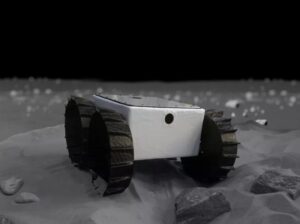 Harkening back to the success of cubesats, small, standardized satellites, NASA will launch a small rover. Iris, that it hopes will also be inexpensive to produce.
Harkening back to the success of cubesats, small, standardized satellites, NASA will launch a small rover. Iris, that it hopes will also be inexpensive to produce.
NASA, Astrobotic, and Carnegie Mellon University are teaming up in the CubeRover project, which targets a 2021 launch date in a private delivery run paralleling the agency’s Artemis program to return to the Moon by 2024.
Iris is about the size of a shoebox, reports Space.com, and weighs less than 5 lbs. (2.3 kilograms). It travels on four wheels.
If all goes well, the rover will drive about 160 feet (49 meters), approximately the width of a football field, a journey that should tell engineers more about how best to travel over the moon’s dusty surface. The drive will take the rover far enough away from its landing site to study how the landing itself alters the surface of the moon.
Iris will support other science and technology payloads on the surface with power, portability and communications.
